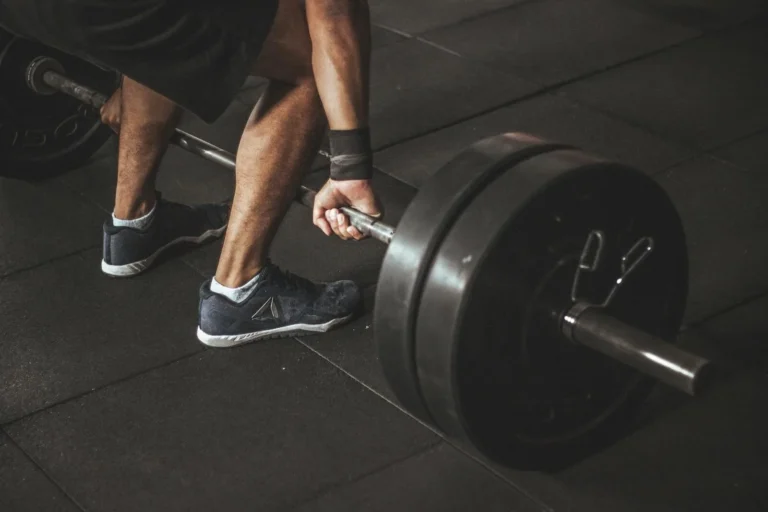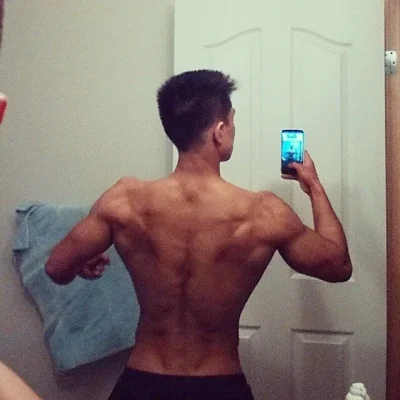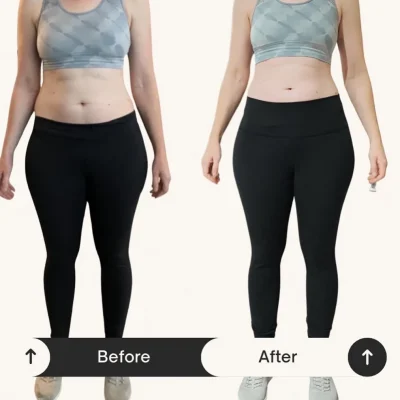Many people aspire to achieve a flat stomach for both aesthetic and health reasons. You can effectively target your core with specific exercises that not only strengthen your abdominal muscles but also promote fat loss. Incorporating a blend of cardiovascular workouts and strength training is vital to achieving your goal. Some effective options include planks, mountain climbers, and high-intensity interval training, all of which can enhance your overall fitness while sculpting your midsection.
Key Takeaways:
- Incorporate a combination of cardio exercises, such as running, cycling, or swimming, to burn calories and reduce body fat.
- Focus on strength training targeting core muscles, including planks, crunches, and leg raises, to build abdominal strength.
- Maintain a balanced diet with a calorie deficit and eat whole foods to support weight loss and flatten the stomach.
Understanding Abdominal Anatomy
Grasping the anatomy of your abdomen helps you engage the right muscles during workouts. The abdomen comprises various layers, including the rectus abdominis, external obliques, internal obliques, and the transverse abdominis. Each muscle plays a vital role in stabilizing your core, maintaining posture, and supporting overall movement. Recognizing these distinct muscle groups allows for targeted training to enhance both strength and appearance.
The Core Muscle Groups
Your core includes not only your abdominal muscles but also the muscles in your lower back, hips, and pelvis. Important groups are the rectus abdominis, which creates the “six-pack” look; the obliques, which assist in twisting movements; and the transverse abdominis, the deep muscle that stabilizes your spine. Each group contributes differently to overall core stability and functionality.
Importance of Core Strength
Strong core muscles improve your balance and prevent injuries by stabilizing your body during everyday activities. A well-trained core supports proper posture, reducing strain on your back. This reinforcement enhances your performance in physical activities, allowing you to lift heavier weights and execute more complex movements safely. Additionally, a robust core is imperative for athletic performance, providing a foundation for explosive movements.
Building core strength translates into improved efficiency in physical tasks, whether it’s lifting, running, or even sitting. A stable core allows for better force transfer throughout your body, which is imperative for sports and fitness training. According to research, individuals with stronger core muscles exhibit a lower risk of injury and improved performance in both daily activities and physical exercise. Prioritizing core workouts can lead to more significant benefits across various aspects of your fitness journey.
Types of Workouts for a Flat Stomach
- Cardio Exercises
- Strength Training
- High-Intensity Interval Training (HIIT)
- Core Workouts
- Pilates and Yoga
Assume that incorporating a variety of these workouts will help you achieve a flat stomach effectively.
Cardio Exercises
Cardio exercises such as running, cycling, and swimming significantly boost your heart rate, which promotes fat loss. Engaging in aerobic activities for at least 150 minutes a week not only burns calories but also helps in reducing overall body fat, including abdominal fat. A combination of steady-state and interval training can enhance results, as varying intensity keeps your metabolism elevated.
Strength Training
Incorporating strength training workouts is important for building lean muscle mass, which increases your resting metabolic rate. Exercises like squats, deadlifts, and overhead presses engage multiple muscle groups, supporting core stability and enhancing overall power. Training with weights at least twice a week can lead to significant improvements in body composition. Choose compound movements that target large muscle groups for the best calorie-burning effects.
Focusing on strength training not only helps tone your midsection but can also prevent injuries by strengthening core muscles. As you lift heavier weights, your body works harder to stabilize, which engages your abdominal area. Complement your routine with resistance bands or body-weight exercises, like planks and mountain climbers, to effectively target your core. This multifaceted approach enhances strength and directly contributes to achieving a flatter stomach. Consistency and progressive overload are key for optimal results.
Effective Abdominal Exercises
Focusing on targeted abdominal exercises can significantly enhance your core strength and help reveal a flat stomach. Incorporate a variety of movements that engage your entire core, including the upper, lower, and oblique muscles. Many of these exercises require minimal equipment, making them accessible for home workouts. Integrating these routines into your fitness regimen promotes muscle definition and supports overall weight loss, contributing to a more toned appearance.
Crunch Variations
Crunch variations can add depth to your abdominal workouts, hitting different areas of your core. Standard crunches primarily engage your upper abs, while bicycle crunches target both the upper and lower abs along with obliques. Incorporating elevated or weighted crunches increases resistance, enhancing muscle engagement and efficiency. Aim for 15-20 reps of each variation to challenge your core effectively.
Plank Techniques
Plank techniques are necessary for building core stability and strength. The traditional plank primarily engages your abs, but variations like side planks and forearm planks further challenge your core and improve muscular endurance. Focus on maintaining a straight line from head to heels, and hold each position for 30 seconds to a minute. This increases time under tension, promoting muscle development.
Incorporating plank techniques can significantly enhance your core strength and stability. You can diversify your routine with side planks, which target the obliques, and plank jacks that add a cardio element to the mix. Engaging your glutes and back during planks also supports spinal health while maximizing core activation. Consistency with planks can lead to noticeable improvements in your overall fitness and contribute to that desired flat stomach.
High-Intensity Interval Training (HIIT)
HIIT combines short bursts of intense exercise with recovery periods, making it an efficient way to burn fat and improve cardiovascular fitness. You can complete a HIIT workout in 20 to 30 minutes, which is appealing for those with busy schedules. This training targets your core muscles, promoting a flat stomach while enhancing overall strength and endurance.
Benefits of HIIT
Engaging in HIIT elevates your metabolism, allowing you to continue burning calories long after your workout ends. This training method can lead to improved insulin sensitivity, better cardiovascular health, and increased fat loss. HIIT workouts are versatile and can be customized to suit your fitness level, making them accessible and effective for everyone.
Sample HIIT Routines
To get started with HIIT, you can follow simple routines that include exercises like burpees, jump squats, mountain climbers, and sprints. A basic structure involves 30 seconds of high-intensity effort followed by 30 seconds of rest. Repeat for 15-20 minutes, adjusting intervals as needed based on your capability.
For an effective HIIT routine, consider the following example: After a brief warm-up, alternate between 30 seconds of burpees and 30 seconds of rest, then move to jump squats, high knees, and push-ups following the same interval format. You can wrap up with a cool-down period to prevent soreness. This structure not only challenges your core but also keeps your heart rate elevated, maximizing fat-burning potential.
The Role of Nutrition in Achieving a Flat Stomach
Your efforts in the gym can only take you so far if your nutrition isn’t aligned with your goals. Consuming a balanced diet is vital for reducing body fat and achieving a flat stomach. Prioritizing nutrient-dense foods while controlling calorie intake helps create the necessary conditions for fat loss. Incorporating protein, healthy fats, and fiber-rich carbohydrates can maintain energy levels and support muscle recovery, which is beneficial on your journey toward a flatter midsection.
Dietary Guidelines
Focus on a diet rich in whole foods such as fruits, vegetables, lean proteins, and whole grains. Aim for a caloric deficit by monitoring portion sizes and frequency of meals. Including foods high in fiber helps you feel full longer while preventing bloating. Additionally, drinking plenty of water aids digestion and can prevent unnecessary cravings.
Foods to Avoid
Minimize your intake of processed foods, sugary snacks, and refined carbohydrates. These foods can lead to increased fat storage, particularly in the abdominal area. High-sugar beverages, trans fats, and excessive sodium contribute to water retention and bloating, hindering your progress.
Processed foods often contain artificial ingredients and preservatives that not only add empty calories but can also impair digestive health. Sugary snacks can spike insulin levels, prompting the body to store fat rather than burn it. Refined carbs, such as white bread and pastries, are stripped of fiber, resulting in quick blood sugar fluctuations that can lead to increased hunger. Staying away from these foods is vital in creating a conducive environment for fat loss and achieving a flatter stomach.
Lifestyle Factors That Impact Abdominal Fat
Your lifestyle choices significantly influence abdominal fat levels. A combination of factors such as diet, physical activity, and mental wellness creates a foundation for your overall health. Consider these key contributors:
- Diet
- Physical activity
- Sleep
- Stress management
- Hydration
Knowing how these elements interact allows you to make informed decisions for a flatter stomach.
Sleep and Stress Management
Quality sleep and effective stress management are important in regulating hormones that control appetite and fat storage. Lack of sleep can lead to an increase in cortisol, a hormone linked to fat accumulation, particularly around your abdomen. Incorporating relaxation techniques or mindfulness practices can optimize both your sleep patterns and stress levels, ultimately benefiting your waistline.
Staying Hydrated
Proper hydration plays a fundamental role in fat loss, including abdominal fat. Drinking enough water can enhance your metabolism, helping your body to efficiently burn calories. Elevated hydration levels support your digestive system, reducing bloating and promoting fullness, which helps curb overeating.
Studies suggest that drinking approximately 2 liters (about half a gallon) of water daily can aid in improving your metabolic rate by up to 30% in the short term. Additionally, substituting sugary drinks with water not only decreases caloric intake but also ensures vital body functions operate seamlessly. Incorporating more fruits and vegetables with high water content into your diet can further promote hydration and enhance your weight loss efforts, supporting the journey towards a flat stomach.
Conclusion
On the whole, achieving a flat stomach requires a combination of core-strengthening exercises, cardiovascular workouts, and a balanced diet. You should incorporate activities like planks, bicycle crunches, and leg raises to target abdominal muscles effectively. Additionally, engaging in regular aerobic exercises, such as running or cycling, can help burn excess fat. Ensure you maintain proper nutrition to support your fitness goals. By combining these elements consistently, you can work towards a flatter stomach and improved overall fitness.
FAQ
Q: What types of exercises are most effective for achieving a flat stomach?
A: The most effective exercises for achieving a flat stomach include core-strengthening workouts such as planks, crunches, and bicycle crunches. Additionally, engaging in high-intensity interval training (HIIT) can help reduce overall body fat, contributing to a flatter stomach.
Q: How important is diet in conjunction with workouts for a flat stomach?
A: Diet plays a significant role in achieving a flat stomach. Consuming a balanced diet rich in whole foods, such as fruits, vegetables, lean proteins, and healthy fats, while limiting processed foods and added sugars can enhance workout results and aid in reducing belly fat.
Q: How often should I work out to target my abdominal area effectively?
A: To effectively target the abdominal area, it is recommended to engage in core workouts at least 3-4 times per week, combined with cardio exercises. Incorporating variety in workouts and ensuring adequate rest days is also vital for optimal results.










































